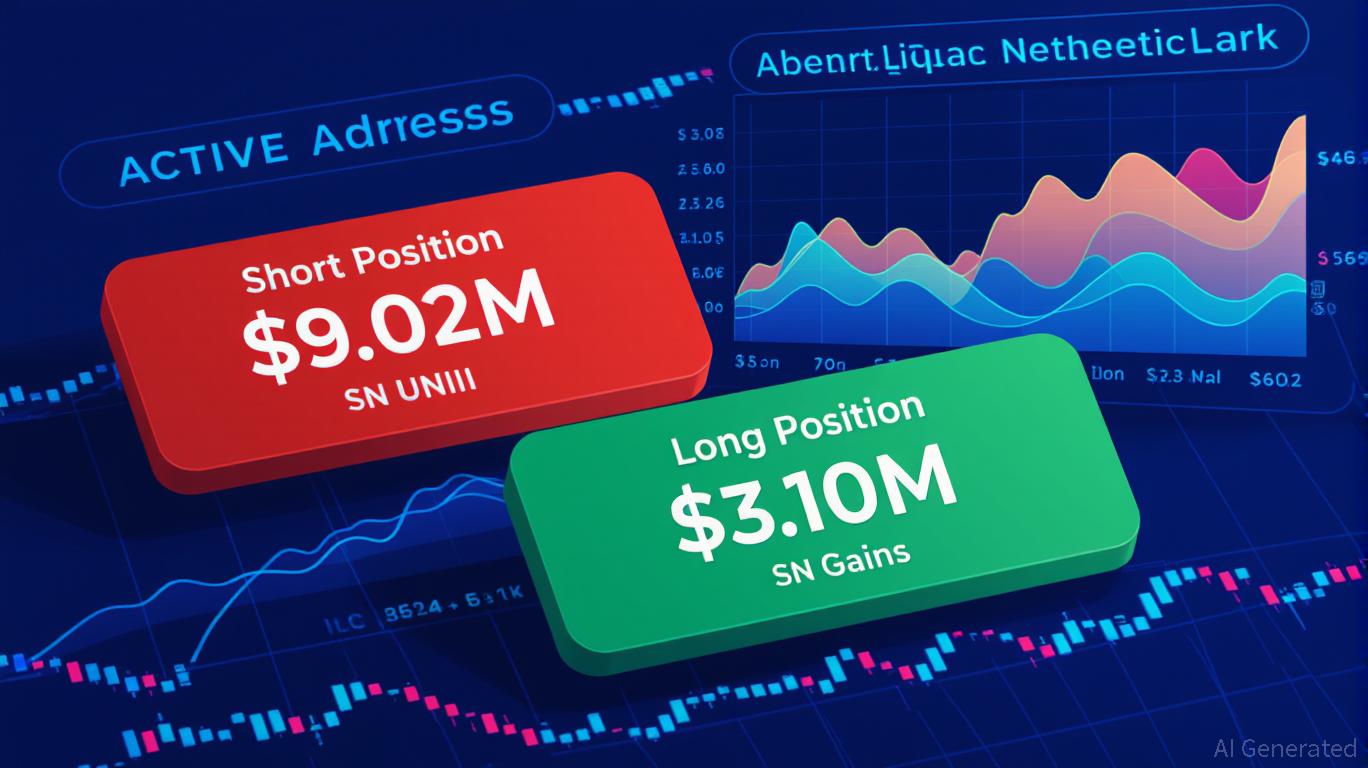Ripple sets sights on TradFi as XRP volumes soar and deals stack up
Ripple is making a hard push into traditional finance, and the numbers back it up. The company has spent nearly $4 billion this year snapping up financial infrastructure companies in a bid to blend crypto with banking.
In an interview with CNBC at the Swell 2025 conference in New York, CEO Brad Garlinghouse made it clear that Ripple is quite literally buying its way in right now.
“I want to see Ripple invest in [the] future and get ahead of where that market’s going,” Brad said on Tuesday.
The company’s entire strategy now leans on using crypto tech inside the very systems that once shunned it.
“The assets we have been buying have been on the traditional finance side, so we can bring crypto-enabled solutions to that traditional financial world,” Brad added.
Ripple’s long-game is to inject its blockchain tech, and XRP, directly into financial pipes that already move trillions daily.
Ripple buys up TradFi firms, raises half a billion
In April, Ripple dropped $1.3 billion to buy Hidden Road, a major prime brokerage. Later in the year, it paid over $1 billion to acquire GTreasury, a software company used by banks and corporates.
And just last week, the company rolled out Ripple Prime, a brokerage built for U.S. institutions that want access to over-the-counter crypto trading.
Ripple also raised $500 million in fresh funding this fall, pushing its overall market value to around $40 billion, all in 2025. The timing is no accident. Institutional appetite for crypto has grown as U.S. regulators pull back.
Under President Donald Trump, the Securities and Exchange Commission and Commodities Futures Trading Commission have relaxed their crackdown on the industry.
Big banks are taking the hint. Bank of America and Citigroup are now exploring stablecoins, with Citi laying out plans for a full custody service launching in 2026. JPMorgan announced in June that it plans to introduce a deposit token on Coinbase’s Base blockchain.
Meanwhile, institutional investors have dumped billions into Bitcoin ETFs since their U.S. debut in January 2024.
“The United States used to lean out on crypto, and now we’re leaning in, and I think people underestimate how big a shift that is,” Brad said. For Ripple, it means an open path to plug in, so long as the tools and deals are in place.
XRP tech offered to banks despite legal freeze
Alongside building its own services, Ripple wants to license its XRP Ledger to banks and financial giants trying to move into crypto. That tech runs the native XRP token and is designed for fast, cheap transactions.
Brad said the more real-world usage Ripple can build around XRP, the better it is for the broader network.
Still, XRP hasn’t moved much in 2025. While Bitcoin and Ether have jumped to $126,000 and $3,900, respectively, XRP has been mostly flat. Brad said big partnerships could change that, but admitted that red tape is still holding things back.
The crypto industry had pinned hopes on a bill called the Clarity Act, which would’ve created clear rules for crypto company and token holders.
But with the U.S. government shutdown now in its sixth week, that bill isn’t moving anywhere. “Until we have that [legal go-ahead], it’s gonna be hard,” Brad said. “Banks are looking for and need that clarity for them to really lean in.”
Disclaimer: The content of this article solely reflects the author's opinion and does not represent the platform in any capacity. This article is not intended to serve as a reference for making investment decisions.
You may also like
Hyperliquid (HYPE) Price Rally: Increased On-Chain Engagement and Institutional Interest Drive Expansion Prospects
- Hyperliquid's HYPE token surged 32% driven by whale trading and institutional adoption via HIP-3 framework. - Whale activity shows $9M UNI short vs. $3.1M long positions, highlighting platform's speculative role in volatile assets. - Institutional partnerships with RedStone and Felix, plus 21Shares' ETF application, signal growing market confidence. - TVL reached $5B with 73% decentralized trading share, but regulatory gaps and leadership changes pose sustainability risks.

The Growing Fascination with Hyperliquid: Is This the Next Evolution in Cryptocurrency Trading?
- Hyperliquid dominates decentralized trading in 2025 with $303B Q3 volume, 62% perpetual DEX open interest, and $5B TVL growth. - Ecosystem expansion includes HyperEVM (100+ protocols, $2B TVL) and USDH stablecoin (backed by BlackRock , $2.2M trading volume). - Institutional adoption grows via 21Shares' ETF application, but risks include regulatory scrutiny, 16-validator security vulnerabilities, and HYPE token volatility. - Competitors like Aster (near-$30B daily volume) challenge Hyperliquid's dominance

YFI drops 2.95% over 24 hours as market experiences turbulence
- Yearn.finance (YFI) fell 2.95% in 24 hours to $4,851 amid crypto market volatility. - Despite short-term gains (0.96% weekly, 2.52% monthly), YFI has dropped 39.62% over one year. - Traders analyze technical indicators and on-chain data to assess if the dip is a correction or deeper trend. - A backtest evaluates moving averages and volume signals to test strategies for mitigating losses during volatility.
JPMorgan and DBS Highlight Blockchain's Move Toward Real-World International Payments
- JPMorgan and DBS Bank launched a blockchain interoperability framework enabling real-time cross-chain tokenized deposit transfers for institutional clients. - The system connects JPMorgan's Kinexys platform with DBS's Token Services, addressing blockchain network incompatibility to streamline cross-border payments and trade finance. - The initiative aligns with global banks' push for tokenized deposit standards, supported by regulators like Singapore's MAS and potentially influencing future CBDC framewor
